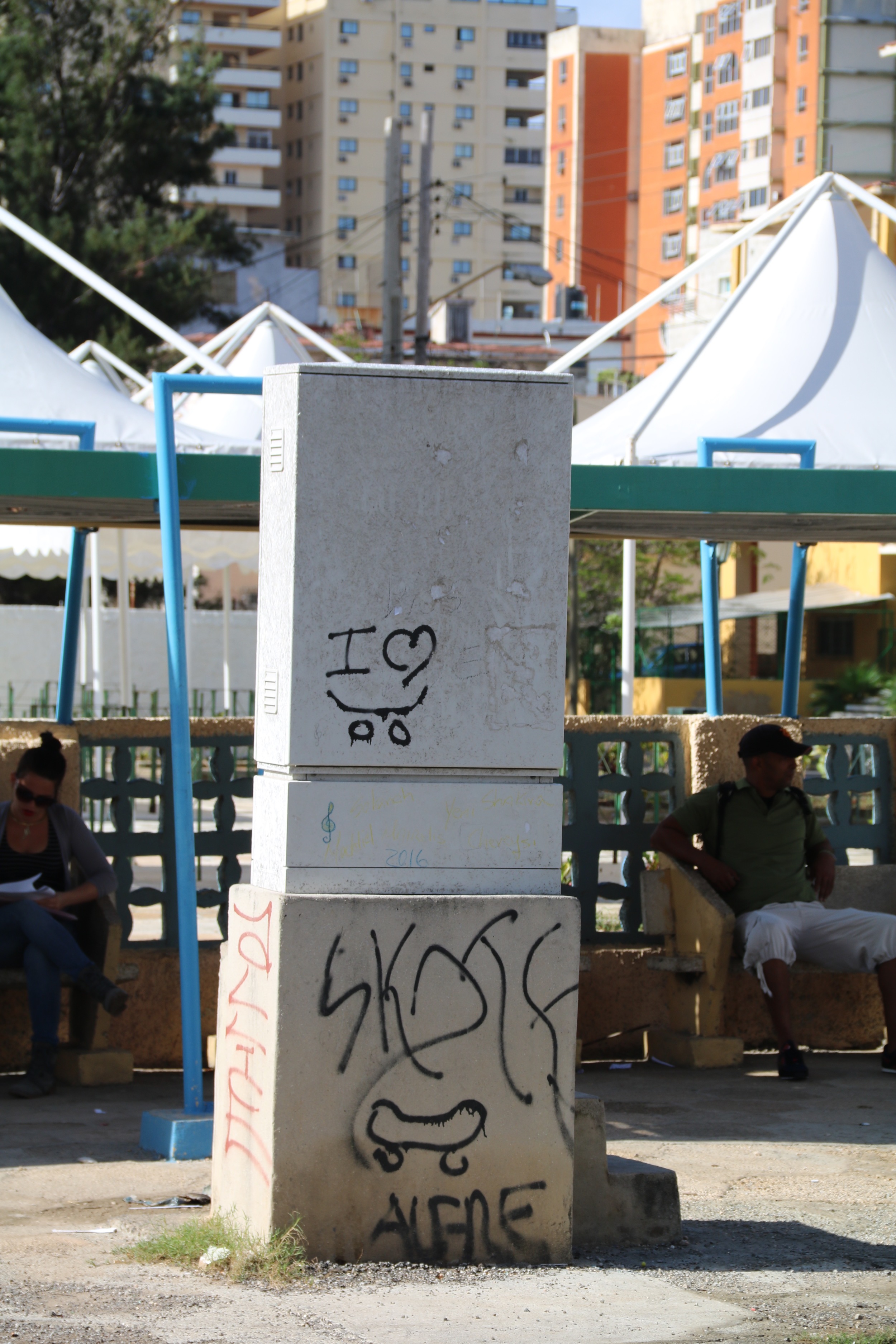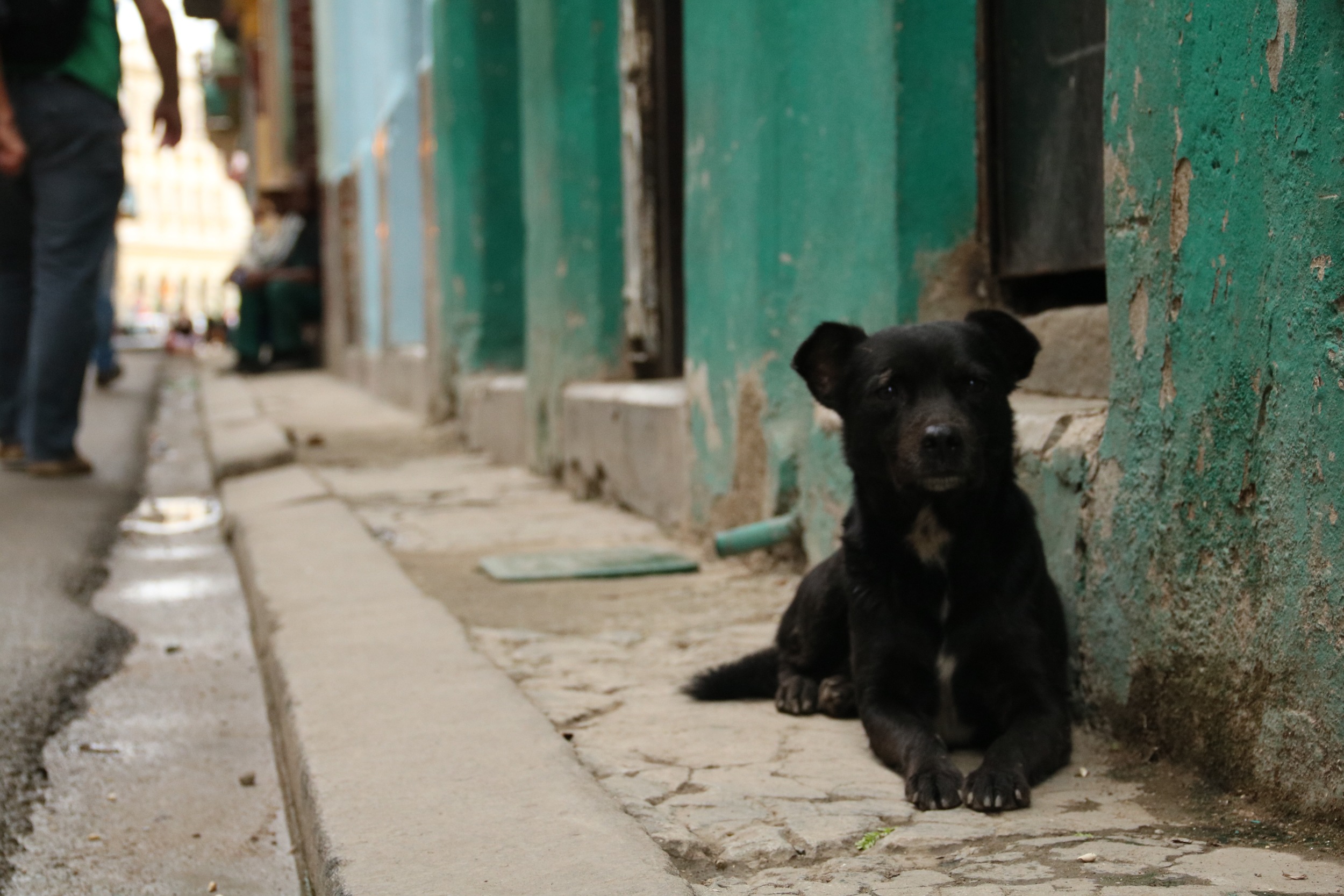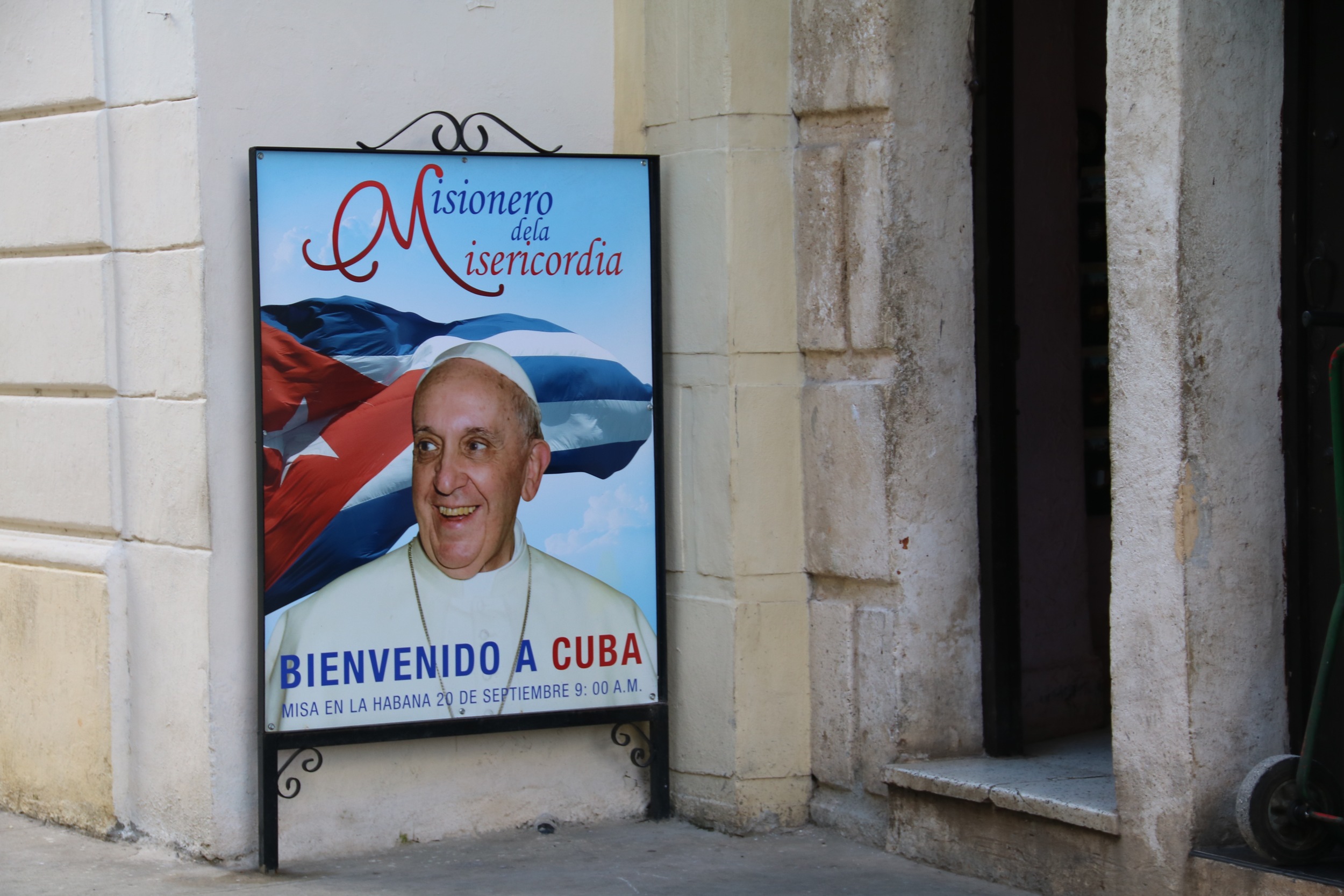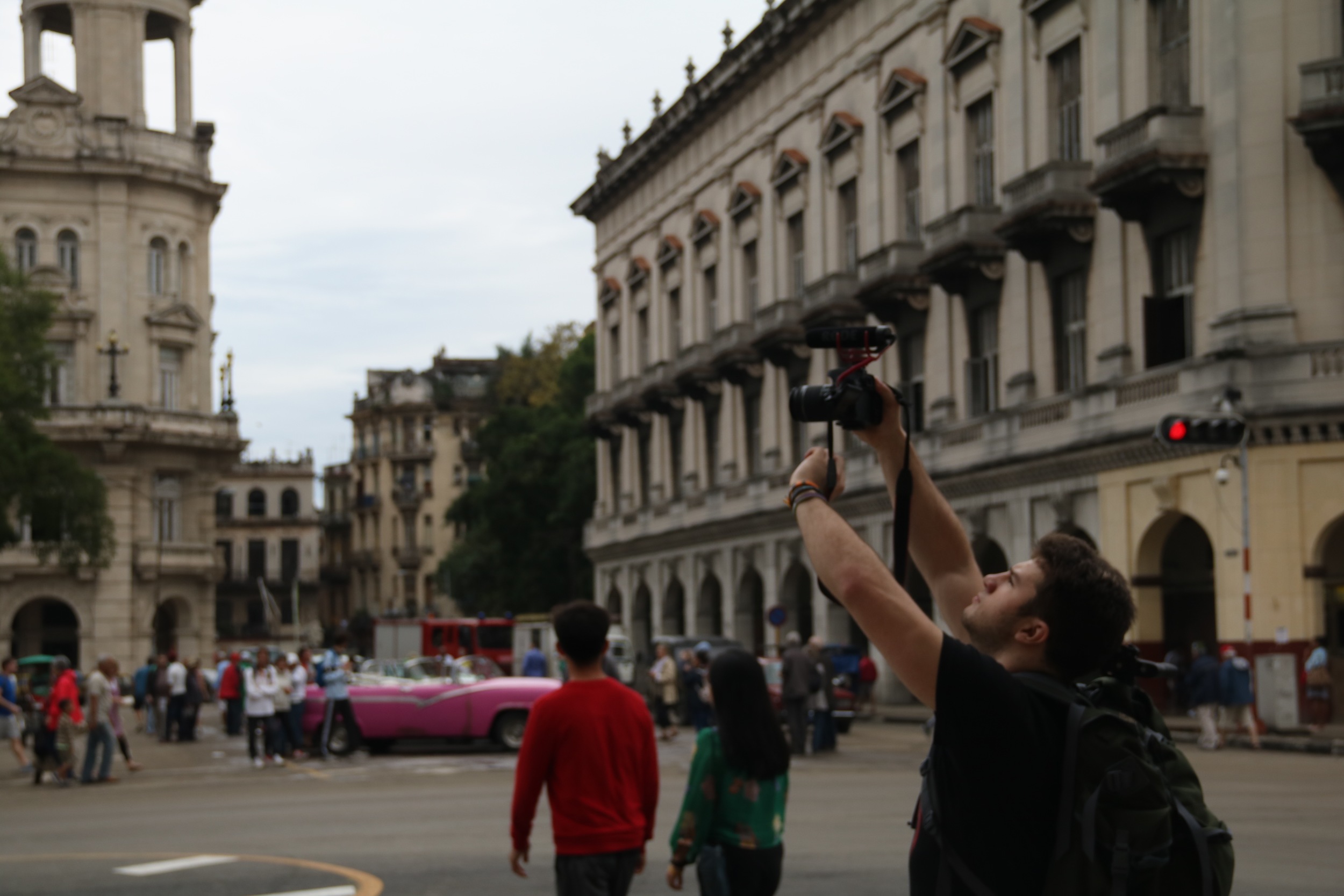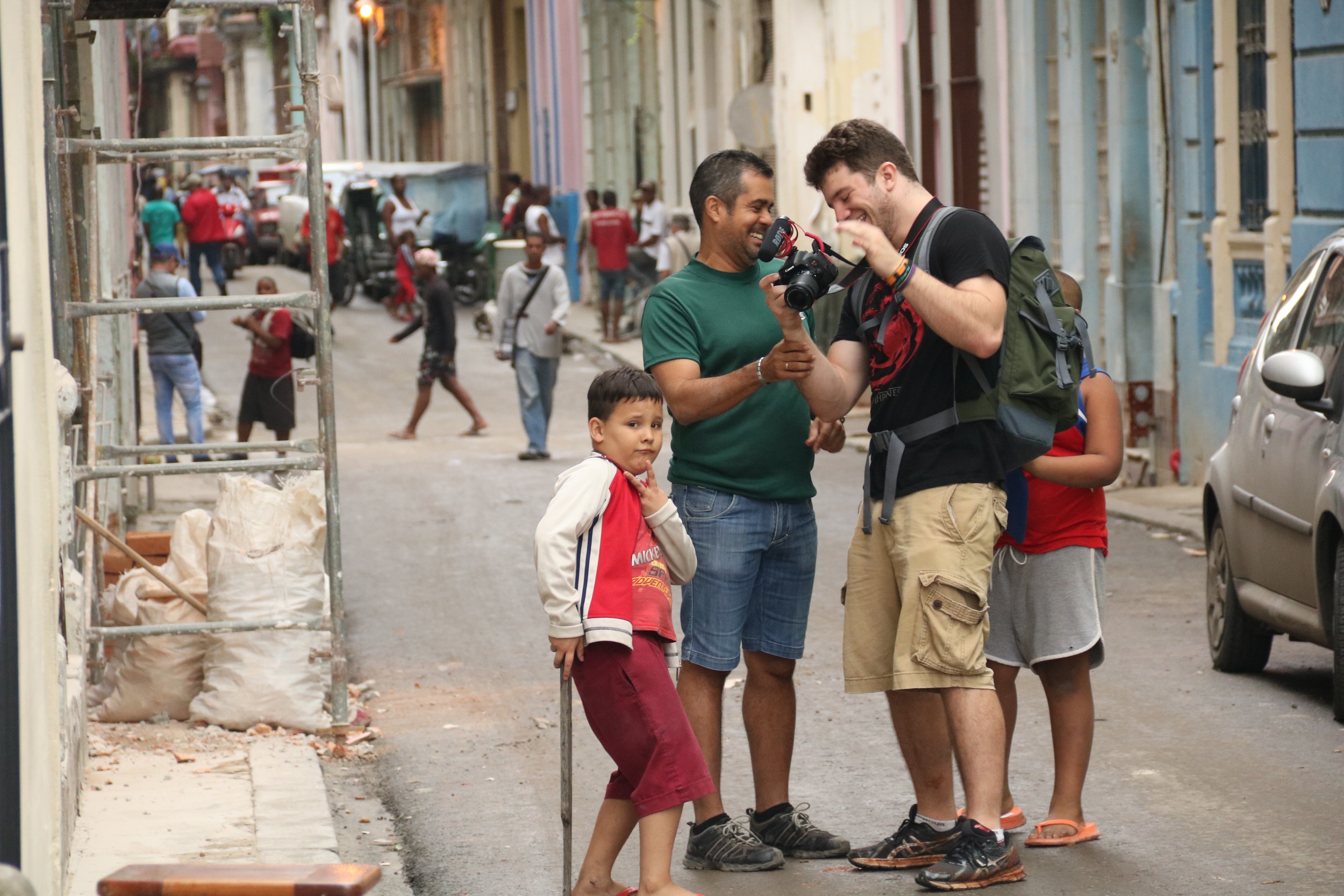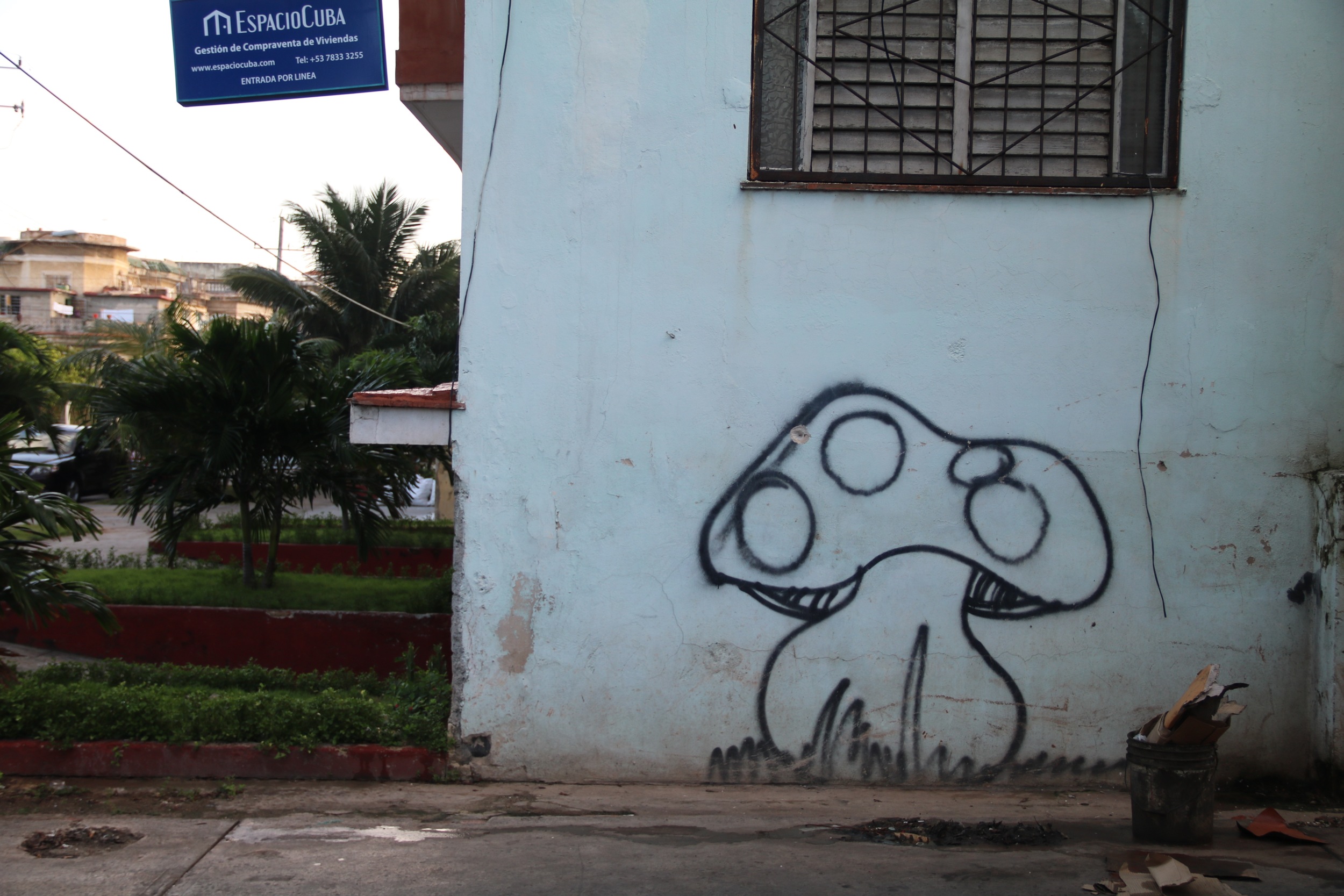D17 was just a year prior to our departure. I was about to get a taste of what it's like in Cuba in this moment, what might change in the next few years, and what the people here think will remain.
D17 (December 17th 2014) was the day President Obama announced the reopening of the US Embassy in Havana.
In an interview with Nick Miroff, former Latin American Correspondent for the Washington Post, he tells me, “It’s so crazy. It’s like the inverse of the starving artist.” It was a story that revealed itself slowly, but by visiting the Havana Gallery scene, community projects premised in the arts, the street music, and the bar circuit, the power of the creative economy came into focus.
All those I met, who shared their perspectives, artistic practices, and their friendship, provided me with the building blocks for my documentary Art in Cuba as well as an essay that supports and expands the scope of the video; I am indebted to their aid.
* * *
+ Setting the scene
The restaurant was all the way up in the penthouse. The elevator was a tight-squeeze, rickety contraption, clearly meant for a bygone era: for tourists no longer around to smell the salt winds crash white-tops over the Malecón (the highway, promenade, and sea wall stretched across northern Havana). The U.S. flag beat rhythmically over the embassy grounds and under scattered street lamps. Even before the salt spray hit the windshields of the few passing cars still out this late, the city was beyond me. It had moved on. Already it had entered a new age and I was just beginning to put the pieces together.
There at dinner, overlooking the Gulf, I had the privilege of chatting with Foreign Correspondent Nick Miroff, stationed in Cuba for the Washington Post. As I began asking about art and the lives of Cuban artists I started to realize that I was about to learn much more than just studio practices. It was becoming clear that I had stumbled into a story that might already be at the center of the zeitgeist.
photography & design by Dan McElroy
Art in Cuba was featured in the Miami Widescreen Film Festival.
* * *
+ Centros Comunitarios Cubanos
fios segment Our Schools, Our Town: Musica e Arte de Cuba and fios segment The Savvy Traveler: Cuba (each produced by Greg Blank) [The link's been broken but no one responded]
All of the artists in this show use art to build community. Each artist is associated with or has founded a community center that uses art to uplift its neighborhood. These centers embrace Cuba’s support for the arts while acknowledging how the state and its contributions steer artists toward more nuanced forms of expression when it comes to subjects of Cuban identity and the Cuban revolution.
The Cuban government gives artists the ability to travel; this permission provides access for artists to sell art on the international art market to make an income that they can use to support their communities. The government also gives direct support through services like public arts education, art exhibitions such as the Havana Biennial (that draw a global audience and achieve international acclaim), and the requisite UNEAC (el Union Nacional de Escritores y Artistas de Cuba, the State Union of Writers and Artists of Cuba), and Saiz Brothers Association, among others.
These centers each have different approaches to community. Casa-Taller Grabadown teaches printmaking techniques to young adults with Down syndrome in Piñar del Río. Their art acts as a therapeutic tool, becomes an alternative form of communication, and allows for a vibrant career path. Pátio Pelegrín teaches art to children in Puerta de Golpe and exhibits artists as a way to supplement local organopónicos (organic subsistence farming) as well as to teach, preserve, and share local traditions. El Ojo del Ciclón is the project of Leo D’Lázaro, a collaborative space where artists share their processes, collaborate in multi-media events, and encourage visitors to participate in cross-cultural learning. Las Terrazas is a terrace farming community built on rehabilitated plantation land that has embraced eco-tourism after the fall of the Soviet Union; this local sustainability influences everything they do including the practices of their artists-in-residence like the papermaking and printmaking of Ariel Gato Miranda of Estudio Ariel. These artists have found a way to financially support their communities while constructing and communicating their own narratives of Cuban culture and society.
I designed a bilingual logo for “Centros Comunitarios Cubanos: Cuban Community Centers”
Reception chat with Dr. Muratov PhD., archeologist, expert in Classical and Hellenistic antiquity, and curator of Greco-Roman art at the Met Museum
Filmed for a fios segment “The Savvy Traveler: Cuba” produced by Greg Blank
* * *
+ Girl on Fire
From art to dance to music, Cuba's education system incorporates strong arts education which, along with state institutions that regulate and organize the arts, has provided one path for Cuba's professional artists to access the international art market. This economic reality paired with the practices of local community projects to preserve traditions and their work to uplift their communities, using the arts as a tool in that process, it's no wonder that Cubans all over the island have many special talents.
Yaudel Machado Díaz is studying to be a doctor but blew me away with an incredible voice. As an encore to his set earlier that evening, here's a cover of Girl on Fire by Alicia Keys:
* * *
+ Photo Journalism
The photos below are a diary of my trip. They speak of a mural and street-art scene, a skate culture, the humor and values of a people who, in a set of old and decaying cities and spread over a landscape dotted in the signs of revolution but lit by the vibrant signals and challanges of their new lives, share an older, wiser culture. They're building lives for themselves and rebuilding their country. This time marks a massive, if lumbering, progress towards the next iteration of that nation. I was simply lucky enough to be along for the ride.
+ Harlem/Havana
As another fortunate arrangement had it, I was invited along with others from the Cuba trip to attend Mayor de Blasio's Harlem/Havana launch event at Gracie Mansion where I met with organizers of the Harlem/Havana music and cultural festival. Myself and others from the communications trip were invited to submit photography that would be shown at Gracie Mansion for the evening. Thus, one of my pieces from the mountains of Puerta de Golpe is shown below.



